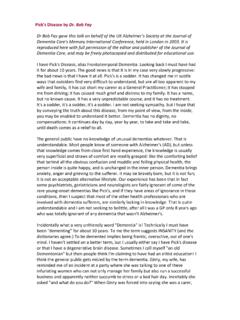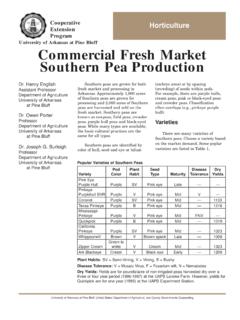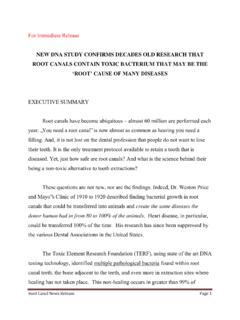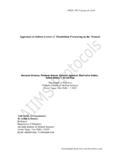Transcription of THE IDEAL BIOLOGIC DENTAL MODEL - …
1 OOOBBIII FFFoooBuuunndddaaantttiiiooonnn fffooorrr BBBiiioooeeesssttthhheeetttiiiccc DDDeeennntttiiissstttrrryyy THE IDEAL BIOLOGIC DENTAL MODEL By Thomas D. Dumont, DDS, FICD, FACD, OBI Faculty Bioesthetics is the study or theory of the beauty of living things in their natural forms and functions. Robert L. Lee, As we delve deeper into learning the nature of the healthiest DENTAL systems, we sense an infinite journey with many discoveries along the way. All that is necessary is curiosity and a commitment to understand.
2 The wonders will unfold and we as BIOLOGIC beings will benefit as never before. Bioesthetic Dentistry is based on the IDEAL Human Dentognathic MODEL (hereafter The MODEL ). This MODEL was discovered by observing and measuring beautiful human dentitions that showed little or no wear, in people over the age of 30. The late Dr. Robert L. Lee, a gnathologist, was the first to make those observations. He wrote and published his findings in Fundamentals of Esthetics by Claude R.
3 Rufenacht, Chapter 5, Quintessence, 1990 - a must read for every dentist. In his quest to understand how the human DENTAL system functioned in health, Dr. Lee drew upon his MS in biology to study optimal BIOLOGIC systems. He observed and recorded nature s successful, long-lasting, unworn dentitions. Amazingly, the most outstanding dentitions had the SAME features in common. This recurring phenomenon facilitated construction of The MODEL . His discoveries led to a change in how he practiced dentistry.
4 By applying the qualities he observed in the successes of nature to his patients, he found his cases to be very predictable, functional, esthetic, and stable --- superior to any treatment he had previously provided. He termed this very biological approach Bioesthetic Dentistry to attract attention. While discovery of The MODEL is very recent in terms of DENTAL history, awareness and practice, it presumably has existed since the very beginnings of humanity. The MODEL , being a composite of outstanding human dentognathic systems, provides objective, relational proportions to serve as an IDEAL treatment goal.
5 Each element has a specific form and function. As humans, vary in size, so do the treatment solutions. The functional relationships, however, remain the same. Why did this solution to the way the mouth works take so long to be discovered? The answer is found in the way we act about disease and health. disease forces us to respond. Health does not. Therefore, we have built a huge industry around treating disease . Our schools teach it. Our clinics and hospitals do it.
6 Without obvious signs and symptoms, people are healthy by default. The deception that health is a wide range of subjective acceptable conditions has detained our investigation of IDEAL health. That context continues to prevail today. Therefore, the lions share of academic time in dentistry whether formal or as graduate continuing education is consumed studying: 1. Classification of deformative, pathologic, or unesthetic conditions. 2. Theories about etiology. 3. Application of products and technologies associated with treating such conditions.
7 Unfortunately, extensive knowledge of DENTAL disease , deformity, technology and products never instructs understanding of optimum DENTAL health. The irony is that the only way to truly learn etiology leading to pathology in a BIOLOGIC system is to know the systems form and function in its healthiest state. Possibly because of our immersion into disease without a solid context for health, general confusion and disagreement surround comprehensive restorative care. DENTAL schools today are, therefore, avoiding controversy by teaching less about dentognathic system dynamics than they did 35 years ago.
8 Confirmation of that point can be found in the flawed conclusions of a 1996 National Institute of Health report, which denies any cause and effect connection between the articulations of teeth and jaw joints. Similar to DENTAL schools, postgraduate DENTAL clinicians have not been curious about people with IDEAL dentitions because they take up valuable time and have nothing wrong . Likewise, these lucky people haven t sought DENTAL attention for the same reason. Again, the logic of studying the healthiest people as the key to solving disease and not the other way around has been largely absent in our profession.
9 For most lay people the concept is simple and makes sense. If our journals are indicative of the kind of treatment currently provided, a substantial amount of multi-tooth, comprehensive restorative dentistry is being practiced. It begs the question: What exact BIOLOGIC parameters of anatomy and function are these cases based on? While The MODEL defines pathology just as perfection reveals imperfection, it has a greater role to serve as the destination for optimum comprehensive DENTAL treatment.
10 Thanks to Dr. Lee s published observations and clinical results, we received the information necessary to treat the system proactively and preventatively. These measurements of what nature s finest dentitions have in common are known as the Bioesthetic Principles . They are: 1. When the teeth are in complete contact, the condyles are in the most superior, anterior, and medial functional position engaging the thinnest portion of the articular disk. Complete occlusion equals stable condylar position.







